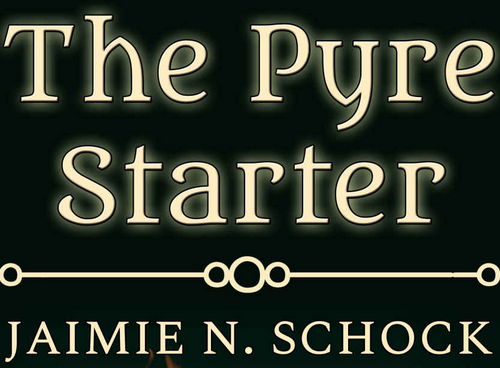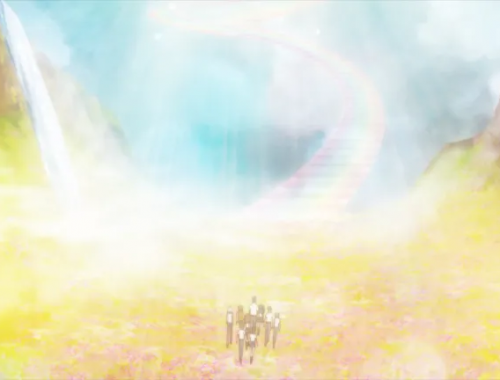Looking Back – Infinite Space, for the Nintendo DS
6 years ago, the Nintendo DS allowed players to travel the stars with the game Infinite Space. I remember being sold on it before it even came out, in part because of the amazing anime shorts put out by Gonzo. I remember absolutely loving this game when it came out, but decided to revisit it to see if it still held up. Surprisingly, it still does, and I might even recommend individuals seek it out. But I also rediscovered just how damn frustrating the game can be, in part because of how it handles and how obtuse certain elements of the game are.
A Brief History of Infinite Space
Infinite Space came out in 2009 for the Japanese, and in March 2010 for the North American and European markets. It was published by Sega, and developed by Nude Maker (Steel Battalion, Terror of the Stratus) and Platinum Games (who would later go on to make Bayonetta and Star Fox Zero). A lot of the art was directed by Kazutaka Miyatake, whose artwork goes all the way back to Space Battleship Yamato and who is also known for his work on the Macross series, which ensures all the ships in this game have a very classic look to them. The majority of the game music was composed my Masafumi Takada, who has done a wide variety of tracks in other franchises such as killer7, No More Heroes, and amazingly Danganronpa. All of the voiceover work was done by a company called Webtone, who is best known not for their work on games but on their work in what they call the “On Hold field” as they work with cooperate answering services.
The game has the player take the row of Yuri, a teen with a mysterious past who wants nothing more than to be a Zero-G dog despite being stuck on a planet where space flight is forbidden. He has a chance encounter with Nia, an “launcher” who specializes in getting people off the ground. Also, piracy. With hard work and a bit of destiny on their side, they’ll escape to the stars where they’ll eventually recruit a potential of over 150 characters to fly an entire armada of ships.
The story is pretty text-heavy, with very few cutscenes. I argue one should stick with it, as the story is pretty well told. People who have never played this game before, however, will think I am lying to them about 15 minutes into the game for a rather unusual reason: when Nia and Yuri leave the planet for the first time, Nia asks if Yuri has anyone he would want to take with him, and he states that he doesn’t – just a father who left him with nothing but an artifact known as an Epitaph. But almost as soon as he is in space, he remembers he has a sister he needs to have by his side, Kira.
Slight spoilers: this strange logic-jump isn’t just intentional, it’s a major plot point later in the game, leading to the true nature of Yuri, the universe, and how it was all created.
The story itself has two very distinct parts, which could be summed up as “Yuri the boy stretches his wings and learns how to fly” and “Yuri the man comes to terms with himself and the Infinite Space around him.” Along the way, however, is a space opera story complete with epic battles against entire space nations, religions, and idiologies. Also, a lot of deaths, including the potential for player character deaths. People can die pretty easily in this game. Some also go crazy, and in one story arc, a young male child becomes the object of affection for some pirates who genuinely intend on raping him before the player character steps in. In some ways, I might argue that the story of Infinite Space is kind of like Game of Thrones of the Stars, with the caveat that the camera never really leaves Yuri.
The Gameplay of Infinite Space
The battle system heavily uses the touch screen, yet still manages to feel clunky and at times slow. The player will spend most of their time paying attention to two gauges. The first is an energy bar that raises from red to green and holds up to four charges; this bar directly influences what abilities the player can use. The rate it rises is pulled from such things as how livable the ships in one’s fleet are as well as how rested the crews
are. The second gauge shows how close one’s fleet is to the enemy fleet, and affects which weapons can be used based off of how the ships are equipped.
Initially, there are only three commands in a player’s repertoire. They can attack with a normal volley of shots. They can barrage, which takes less energy to do but requires a gauge that is at least three-fourths full. Finally, they can dodge, which will make incoming barrages near useless at the cost of ensuring normal attacks always hit. Later in the game, other commands are opened to allow for the use and defense of fighter ships, and to make use of the special abilities of certain spacecraft. Certain recruitable characters can also give special attacks for ships.
Illustration for article titled Looking Back – Infinite Space, for the Nintendo DS
Most of the customization in this game comes from equipping modules to ships. Module blueprints are bought, and from then on unlocked for any ship the player may have. Modules can do anything from increase livability to the amount of experience a certain type of crewmember might get. Different ships have different module ‘boards’ in which modules can be placed, and the size and shape of modules need to be kept in mind as the player does so. This allows for some neat customization options, but since the game never tells you what the customization options do directly, there’s a lot of trial and error in discovering what works for certain ships and in certain scenarios.
There’s also scenarios in which a ship’s crew may actually end up fighting another ship’s crew. This is kind of a rock, paper, scissors style of battle which is inevitably rigged against the player because the computer appears to choose its choice after it knows what the player has chosen. I wasn’t too fond of these battles when they came out. Looking over the game again, I’m still not very fond of them. In theory they should be awesome. In reality the player won’t survive unless they have numbers for sheer force.
In 2010, the gameplay was considered about par for the course of what one would expect from an RPG. I’ll be honest, the gameplay isn’t entirely captivating today either, but it is functional and the fights themselves do feel like solid space battles. They’re just grindy, long space battles, which can be a deterrent at times especially as that very grind can feel like it’s getting in the way of the meat of the game, which is the story. Sometimes, I wonder why this “game” wasn’t just a novel or a mini-series.
The Sound of Infinite Space
The soundtrack, in my opinion, doesn’t hold up well. The reason for this has less to do with the soundtrack itself, which is functional if not forgettable, and more to do with how it sounds so tin-y and hollow whether you’re listening to it on the Nintendo DS’s speakers or from the official soundtrack.
Although this song from the ending is pretty neat, and I felt it could have featured more prominently:
The Graphics of Infinite Space
The character art is solid and inspired, feeling genuinely like something one would see from a space opera. This is no small feat, considering the number of characters the player will come across. These portraits are fairly static however, so don’t expect to see a lot of emotion from them. The cutscene stills vary from eye candy to functional set-pieces; few of them seem out of place. They, too, are static. This creates a situation where perhaps more focus is placed on how text heavy this game is than it needs to be.
The space battles look like space battles. They aren’t heavily inspired, but they’re also not hideous. Being on the Nintendo DS, they are certainly blocky with low polygon counts, but its hard to hold that against them. Playing the game long enough will lead to the ability to recognize different types, and classes, of ship from sight; no small feat considering the variety of them.
In general, wherever the graphics of this game are 3-D, they aren’t going to have aged particularly well. It is unlikely that will be a turn-off for those who would otherwise be interested in this game, however.
The Summary of Infinite Space
If you find a copy of this game, in some capacity, definately give it a try especially if you’re the kind of person who loves science fiction stories coupled with epic pew pew. Bring a notebook, too; for some reason this game doesn’t have an in-game quest journal so it can be really easy to get lost sometimes. While the graphics might not have aged well, the experience is just as good (and just as bad) as it was 6 years ago, and it’s hard not to recommend it for that.
If there is one thing I’d warn about this game, it’s that while it is a game on a handheld it is not an easy game to play in short bursts. Between the long battles and the long bits of text, the game requires long moments of focus.



